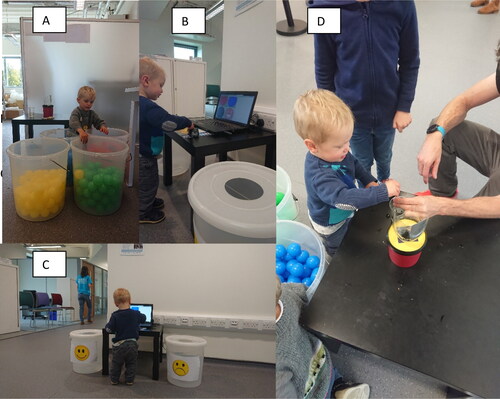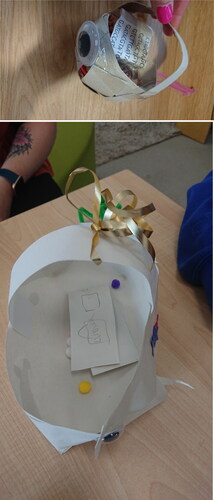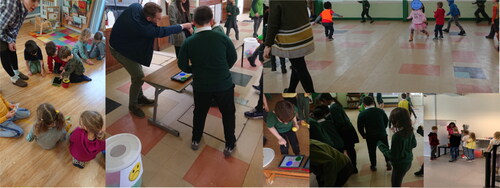Figures & data
Figure 1. The steps of playing bacteria-tag, from collecting a ‘medicine’ when you are tagged by a ‘bacteria’ (A), to checking if the medicine works (B) and placing it in the appropriate container – smiley face if the medicine worked and sad face if it didn’t in which you try another medicine (C). The additional step in round 2 of using a detection system to select the medicine is illustrated in D.

Figure 2. Detection system examples. This doesn’t need to be anything expensive – a container from recycling and some old electronics work well. Alternatively children could work together to construct detection systems themselves using recycling to junk model and craft items for internal components. In terms of the design of a detection system the one on the far left which utilizes an upside down bottle as a sample entry container is less messy than the alternative as children usually hold the syringe inside this area before releasing the liquid whereas the alternative designs had some issues with poor aim resulting in the ‘snot’ solution spraying everywhere.

Figure 3. Bacteria junk-modeling. A) a bacteria made from cardboard (wall), a pipe cleaner (flagella), some pom poms (internal chemicals) and a strip of paper (DNA/instructions). B) a bacteria made from paper (wall), ribbons (flagella), some pom poms (internal chemicals) and a strip of paper (DNA/instructions).

Figure 4. A) The activity being undertaken in a school setting. B) close-up of test strips, one on the left showing a positive result by turning red and the one on the right showing a negative result. C) the activity being undertaken with 3 to 5 year olds and inspiring on-going play with a large testing regime applied to PlayMobil characters.


